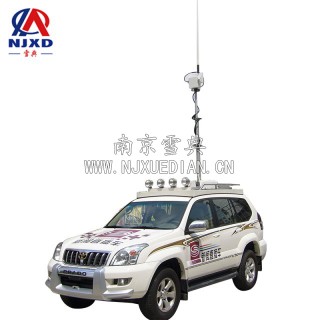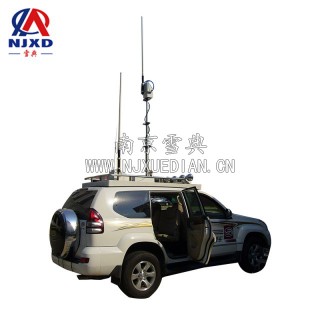NEWS
Historical lifting antenna of global mobile communication system
Time:2020-12-23 View:

Global Mobile communication System (Global System for Mobile Communications), abbreviated GSM, is a digital Mobile communication standard formulated by ETSI, the European Telecommunications Standards Organization. Its air interface adopts time division multiple access technology. Since it was put into commercial use in the mid-1990s, it has been adopted by more than 100 countries around the world. The ubiquitous GSM standard makes the international roaming of users after signing the "roaming agreement" between mobile phone operators become very common. The biggest difference between GSM and its previous standard is that its signaling and voice channels are digital, so GSM is regarded as the second generation (2G) mobile phone system.

History
Global mobile communication system (GSM) is by far the most successful global mobile communication system. Its development began in 1982. The predecessor of the European Telecommunications Standards Association (ETSI), the European postal Telecommunications Management Conference (CEPT) established the Mobile Special Action Group (Groupe Speciale Mobile), the team was authorized to improve many suggestions on the pan-European digital mobile communication system. The two goals you are trying to accomplish are:
First, better and more effective technical solutions for wireless communication-at that time, digital systems were in user capacity, it is obvious that the ease of use and the number of possible additional services are better than the simulation system that was still very popular at that time.
Second, achieve unified standards across Europe to support cross-border roaming. This was impossible before, because countries used incompatible simulation systems.
In the following years, several companies put forward some suggestions for this system. These suggestions cover almost all possible technical measures in different technical fields. The proposed multiple access methods include time division multiple access (TDMA), frequency division multiple access (FDMA) and code division multiple access (CDMA). The proposed modulation technologies include Gaussian minimum shift key (GMSK), quaternary numeral system frequency shift keyed (4FSK), Orthogonal amplitude modulation (QAM) and adaptive differential pulse modulation (ADPM). All proposed systems have been tested on-site and channel simulator. In addition to technical factors, market and political factors also affect the decision-making process. Since FDMA needs antenna diversity at the mobile station, FDMA-based solutions are not considered in the end. Although the technical feasibility of this diversity has been proved by Japanese digital systems, the increased antenna size still cannot be an ideal choice. CDMA was finally excluded, because the signal processing necessary to adopt the CDMA method seemed too expensive and unreliable at that time.Therefore, only the TDMA system can be retained in this selection process. However, the final (TDMA) system does not come from a company's suggestion, but in turn forms a compromise system. The reason is political rather than technical: choosing a company's proposal as the standard will bring this company a considerable competitive advantage.

In the early 1990 s, people realized that GSM should have some functional features that were not included in the original standard. Therefore, the so-called second-stage specification including these functions was not developed until 1995. Further functional improvements, including more efficient modulation schemes adopted by packet radio and EDGE, were gradually introduced later. Based on these extensions, GSM is usually called the 2.5 generation system, because its functions are stronger than those of the second generation system, but it cannot have all the functions of the third generation system.
The success of GSM surprised everyone. Although it was originally developed as a European system, it has been widely used in the whole world while being popularized and applied in Europe. Australia was the first non-European country to sign a basic agreement. Since then, GSM has gradually become a global mobile communication standard, with more than one billion users in 2004. Of course, there are some exceptions: Japan and South Korea have never adopted GSM.
There are three versions of GSM, each of which uses a different carrier frequency. The original GSM system used a carrier frequency around 900MHz. Later, GSM-1800 is added, which is called DCS-1800, to support the increasing number of users. The carrier frequency it uses is around 1800MHz, the total available bandwidth is about three times the available bandwidth around 900MHz, and the maximum transmission power of the mobile station is reduced. In addition, GSM-1800 is exactly the same as the original GSM. Therefore, signal processing, switching technology and other aspects can be used without any changes. Higher carrier frequency means greater path loss, and the decrease of transmit power will cause the cell size to be significantly reduced. This practical effect, together with a wider available bandwidth, can greatly expand the network capacity. The third system is called GSMl900 or PCS-1900 (personal communication system), which works at 1900MHz carrier frequency and is mainly used in the United States.
GSM is an open standard. This means that only the interface is specified without limiting the specific implementation form. As an example, let's consider the modulation method adopted by GSM, namely GMSK. GSM standard specifies the upper limit of out of band emission, phase jitter, intermodulation products, etc. How to achieve the required linearity depends on the equipment manufacturer. Therefore, this open standard ensures that all products from different manufacturers can be compatible with each other, although they may still differ a lot in terms of quality and price. Compatibility is particularly important for business providers. When a proprietary system is adopted, the service provider can only select the equipment supplier once during the initial network construction phase. For GSM (and other open standards), service providers can purchase base stations from one manufacturer first, and then purchase base stations from another manufacturer with more reasonable price to realize network expansion. Business providers can also purchase some parts from one company and other parts from another company.

CATEGORY
NEWS
- Combination scheme of lifting mobile communication system
- Historical lifting antenna of global mobile communication system
- System composition of lifting antenna global mobile communication system
- Security requirements and technical characteristics of global mobile communication system lifting an
- Frequency band of lifting antenna global mobile communication system